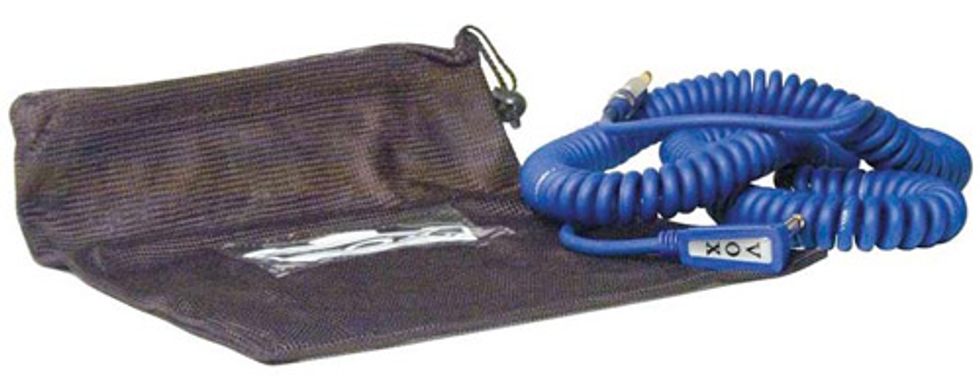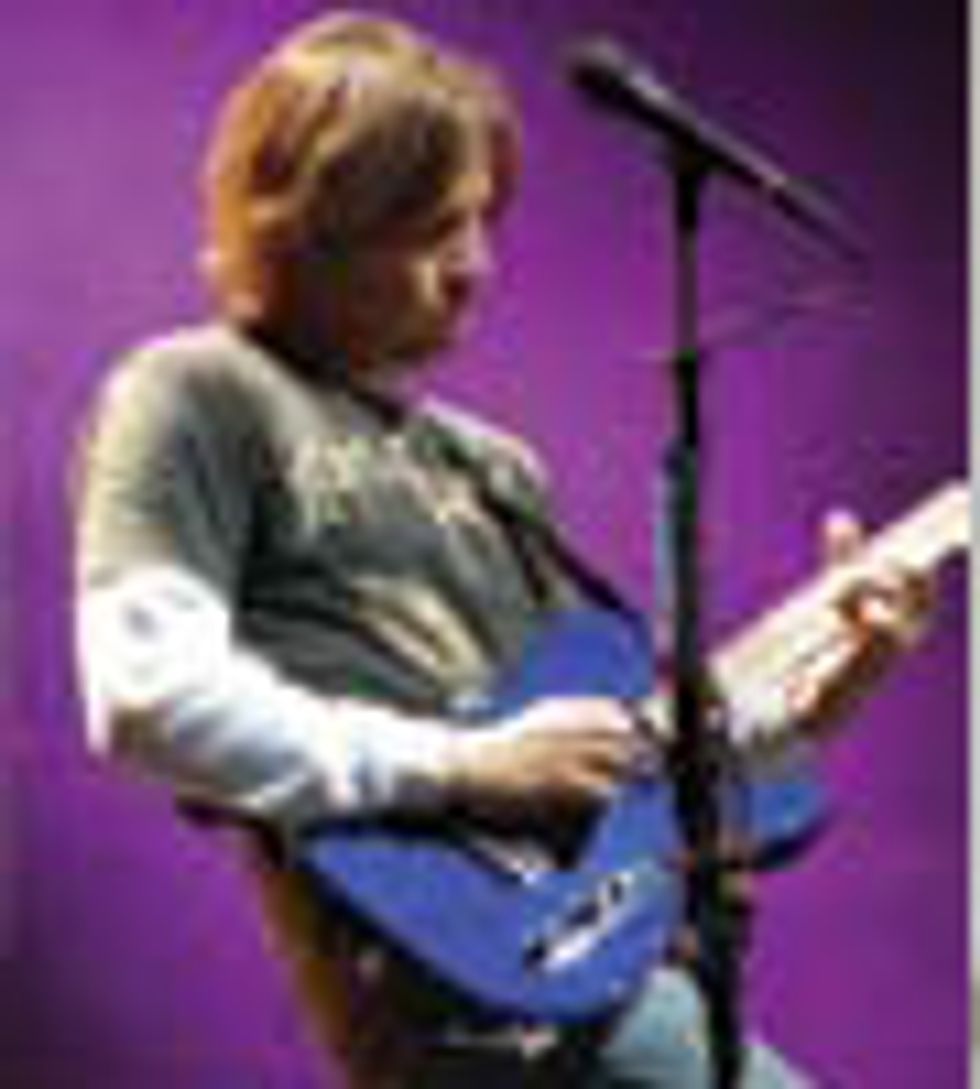As you hone your style
over the years, you usually
figure out whether you’re
a Strat guy, a Tele guy, a Les
Paul guy—or something that’s
sort of a mix of those. You then
focus on what amp is going
to give you the best possible
sound. Often it’s Marshalls or
Boogies for you rockers, Fender
Twins for the chicken-pickers,
or something more out of the
ordinary like a Line 6 DT50
might be your amp of choice.
Then it’s time to pick out what
pedals will give you the right je
ne sais quoi.
Once you settle all that,
what’s next? Whether you call
it a lead, a cord, or a cable,
that shielded wire that links
your guitar to your amp—and
your music to your audience—is a vital link in your tone
chain. All things considered,
you may never think much
about it, but it’s as integral to
your sound as your other gear.
Over the years, I’ve had guitarists
tell me all they need is a
cheap, knock-off model guitar
to sound good—that all their
tone comes from their hands.
I’ve heard others say you’ve got
to have top-notch gear to sound
great. These are both valid
schools of thought. I’ve also seen
guys struggle onstage using haphazard,
jerry-rigged, MacGyver-style
setups. I’ve watched them
kick crackling cables and shake
connections to keep a signal
running to their amp. Somehow,
I can’t get behind that as an
effective option.
If you’re the type of player
who believes in having top-of-the line gear, it won’t really
matter how spectacular and
expensive your guitar, amp, and
pedals are if it all travels from
one end to the other through
poorly made, subpar connections.
A good cable doesn’t have
to cost a whole lot of money,
but the better ones do cost a
little more. Buying a brand-name
cable—ideally one with
a guarantee—usually helps.
I’ve purchased cables that had
lifetime guarantees, and that’s
quite a declaration for a cord.
Of course I lost them or left
them at a gig long before they
ever had a chance to go bad, so
who knows? Maybe someone is
still using them today.
When buying a guitar cable,
size does matter. Cables will
always add some capacitance
and a load to your guitar’s signal.
The longer the cable, the
more it adds. A little might not
be too bad, but a lot can completely
screw up the tone you’ve
worked so hard to achieve.
Most standard guitar cables are
about 18’ long. Which makes
sense, as my web research
reveals that cable lengths of 20’
can begin to dull your tone.
And that’s even with a quality
cable. Use an inferior cord,
and you’ll more than likely start
to hear some high-end loss in
your rig. Your guitar may sound
dull or muted, and undoubtedly
you’ll start to pick up noise.
I used to run a thin 40’ foot
cable to my pedalboard and
back through a multi-pin snake.
It was a quick and easy setup,
but ultimately I was playing
music through 80’ of bad signal
path. I was blown away at the
amount of punch and high end
I gained back when I changed
my rig around and no longer
ran signal out to the pedals. It
made a gigantic difference.
On the flip side, if you have
too much bright spikiness in
your sound, or if you just want
to mellow it out for a vintage
tone, you may want to try a
more old-school approach and
dig out what I’ve always called
a “curly cord.” They were very
popular in the ’60s and ’70s.
Hendrix used one, and so did
many of the top artists of the
day. You can see these curled
cords (Pro Co Lifelines are one
brand/make that’s been around
for a long time) being used
on reruns of the old Midnight
Special TV variety show. I’m
pretty sure that the guitar greats
of that era would have used better
cables if they were available,
but this was the technology of
the day, and it inadvertently
helped shape their sounds.

Retro to the Max: Vox is one of several companies offering coiled guitar cables, which are making a comeback after being ignored for decades.
A respectable cable can cost a bit more than a generic one. I’m not recommending that you go out and spend $150 on an 18’ guitar cord (yes, they are out there). A true audiophile may argue with me, but personally I don’t hear $120 worth of difference between one of those high-dollar connectors and a decent standard one. You may want to go to your local music store to A/B them yourself. After all, Eric Johnson says different cables and even different types of batteries in his stompboxes change his sound, and you might find you agree with him.
The patch cables that hook all your pedals together should be given the same consideration as the cord that hangs from your guitar. Even if you’ve got the best cables money can buy running from your guitar to your pedalboard and from there to your amp, the audio will still have to travel through the dinky signal path between effects. My guitar tech goes crazy over this stuff. He makes sure that every cable is of good quality, and he will even shorten patch cables so the signal doesn’t travel even one gratuitous millimeter more than necessary between pedals.
Next time you plug in, take a look at the umbilical cord that’s the lifeline to your music, and make sure you’re hooked up right!
 Rich Eckhardt is a
Nashville guitarist who has
performed with singers
ranging from Steven Tyler
to Shania Twain. He currently
plays lead guitar for
Toby Keith, and also works
as a spokesperson for the Soles4Souls
charity (soles4souls.org). His latest album,
Cottage City Firehouse, is available at
richeckhardt.com and CDBaby.com.
Rich Eckhardt is a
Nashville guitarist who has
performed with singers
ranging from Steven Tyler
to Shania Twain. He currently
plays lead guitar for
Toby Keith, and also works
as a spokesperson for the Soles4Souls
charity (soles4souls.org). His latest album,
Cottage City Firehouse, is available at
richeckhardt.com and CDBaby.com.









![Rig Rundown: Russian Circles’ Mike Sullivan [2025]](https://www.premierguitar.com/media-library/youtube.jpg?id=62303631&width=1245&height=700&quality=70&coordinates=0%2C0%2C0%2C0)







